Twist Tester TY370
Yarn Twist Tester, is designed to determine yarn twists in single or plied yarns, quadrant type with auto stop & reverse for conventional or untwist/re-twist methods. Twist Tester Machine complies with ISO 2061, ASTM D1422/1423, BS 2085, etc. The Twist Test is essential in textile testing. Our Yarn Twisting Machine price is also competitive.
Description
Application
The Twist Tester is used to get the coefficient of twist, which is a measurement of the level of twist of the yarn and is suitable for testing single or plied yarns. Besides, it is equipped with auto stop & reverse for conventional or untwist/re-twist methods. Therefore, yarn twist testing is an easy task for textile testing labs or factories by applying the instrument.
Twist tester offers adjustable test lengths up to 500mm/20 inches for S & Z twist yarns, and the inching function helps the operator to get an esteemed twist quickly. Moreover, the touch screen can directly show the test result in TPI / TPM.
The test principle
The instrument carries out the specimen test driven by the CPU management. One end of the test sample is clamped in the jaws of the moving gripper while the other end is in the jaws of the rotating gripper under the standardized pre-tension. Then rotating the sample at a specified speed until it untwists. Next, twist the sample again. Finally, the moving gripper will be back to the original position instead of being in the original zero zones.
How to Measure the Number of Twists in Yarn?
In order to measure the number of twists per unit length of yarn, testers often untwist a known length of the yarn and check to see whether the twist has completely appeared in a visual way. Besides, there are two methods of twist measurements. The first one is the straightened fiber technique or the direct count method. The second is the twist contraction technique or the untwist and re-twist method.
Specifications
- Touch screen
- 4 test methods Direct counting, untwist/re-twist, 3- times untwist/re-twist method, etc.
- Length of the specimen 0~500mm adjustable
- Twist speed 100 ~ 1900 rpm
- Yarn count range 1 ~ 499.9 tex
- Unit TPM / TPI
- Twist range10~4999
Standard Accessories
Weight
Yarn pulling stand
Wire pulling needle
Weight
| 15kg |
Power
| 220/110 V | 50/60 Hz |
Dimensions
| Length: | 880 mm | Width: | 250mm | Height: | 210 mm |
Standards
| ISO 2061 | ASTM D1422 | ASTM D1423 |
Welcome to TESTEX – a professional textile testing instrument supplier – Twist Tester is on sale, contact us to get a detailed price quote.
2 reviews for Twist Tester TY370
You must be logged in to post a review.
The importance of twist in the yarn
The twist of yarn not only affects the yarn strength, but also the color accuracy after dyeing and the fluffy degree of cheese yarn. Therefore, it is advised that the rate of rewinding should be adjusted according to relatively high twisting in yarn to prolong the time of the cheese yarn dyeing process, which leads to a higher average speed of yarn dyeing. Hank dyeing is an important stage of the yarn dyeing process. A higher yarn twist will lead to more shrinkage under hot and humid conditions. Thus, it is of great importance to increase the linear density of a yarn.
What is Twist in Yarn?
Yarn twist is defined by the degree of tightness applied to the fiber and it is normally measured by the number of twists (1 twist is equivalent to 360° of traveled fiber) of unit length. Generally, the unit length for staple yarn is “10cm”, and the length ratio is “1m”. The higher the number of twists in a particular length, the higher the yarn twist, which results in greater tightness among the fibers(Table 1).

The yarn twist test method
1. Experiment Apparatus and Material
TY370 Yarn Twist Machine, and Types of Yarns.
2. Testing Method
(1)Preparation for Specimen
Firstly, put the specimen under standard atmosphere(For the non-arbitration experiment, Grade 2 standard atmosphere is applicable) for at least 16 hours. Pick 1 spline type for the longitude and 5 spline types for the latitude. The length of the specimen should be at least 70~80mm longer compared to the experimental length and the width should be appropriate for the number of yarns during the experiment(Table 2). For the condition of using more than 1 type of spline, the number of yarns for different combinations of spline types is mostly the same. If a particular accuracy is intended, the lowest number of testing should be set according to statistics. For yarns containing sizing or other non-fiber specimens, certain preparatory works can be done for the convenience of untwisting. For printed fabric, the dyed part should be avoided.
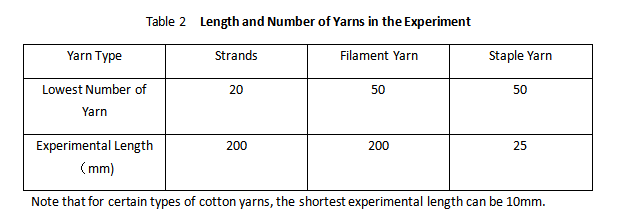
- yarn twist test procedure
- Unweave a yarn with a length of approximately 100mm and place it vertically. Observe the twist pattern by paying attention to the direction of the helix pattern. For the pattern same as the middle part of the figure “S”, it is called the yarn twist s; For the pattern of the middle part of figure “Z”, it is called the yarn twist z.
- Without causing unintentional stretching and untwisting in the yarn, Unweave the yarn by pulling it out at one end from the side of the specimen. Use the grip to fix one end of the yarn. Before fixing the other end, ensure the yarn is under proper tension(Table 3).
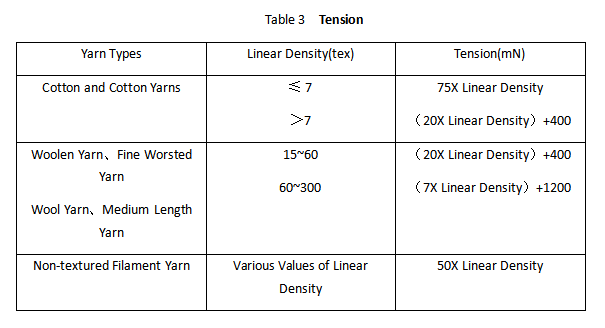
- Rotate the twisting grip to untwist the yarn until all the fibers of the yarn are parallel among each other or until all the yarns in of the strand are separated.
- Record the number of untwisting rotations.
- Weave the yarn from the specimen and repeat the previous steps until the desired number of yarns for the experiment is achieved.
If the testing of yarn twist of the yarn in the strand(Filament or Staple yarn) is required, the stretching tension can be calculated according to the linear density of the yarn; Next, adjust the tension. Remove the unwanted yarns and adjust the lengths of the yarns to be tested by referring to Table 2; Follow the steps mentioned above to carry out the test. According to the test results, calculate the longitudinal and latitudinal values of the average twist should be calculated separately (to the nearest whole number).

[contact-form-7 id="16355" title="Inquiry"]
A: Yes, you can program the system by yourself and do the tests you want, such as testing whether 500 mm yarn can be twisted exactly 25 times one direction.
Q: Does this instrument provide weights?
A: Yes, the weights will be supplied with the instrument, and please kindly find the details of the weights as below:


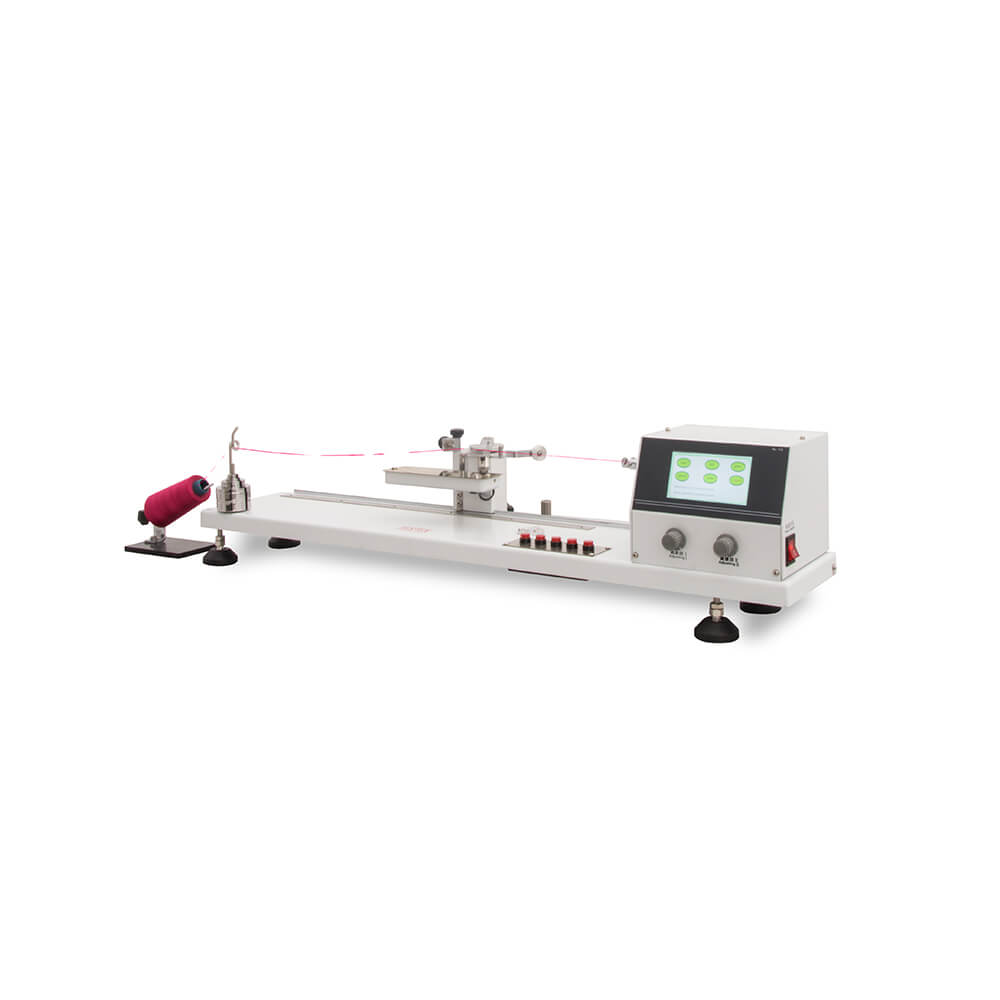
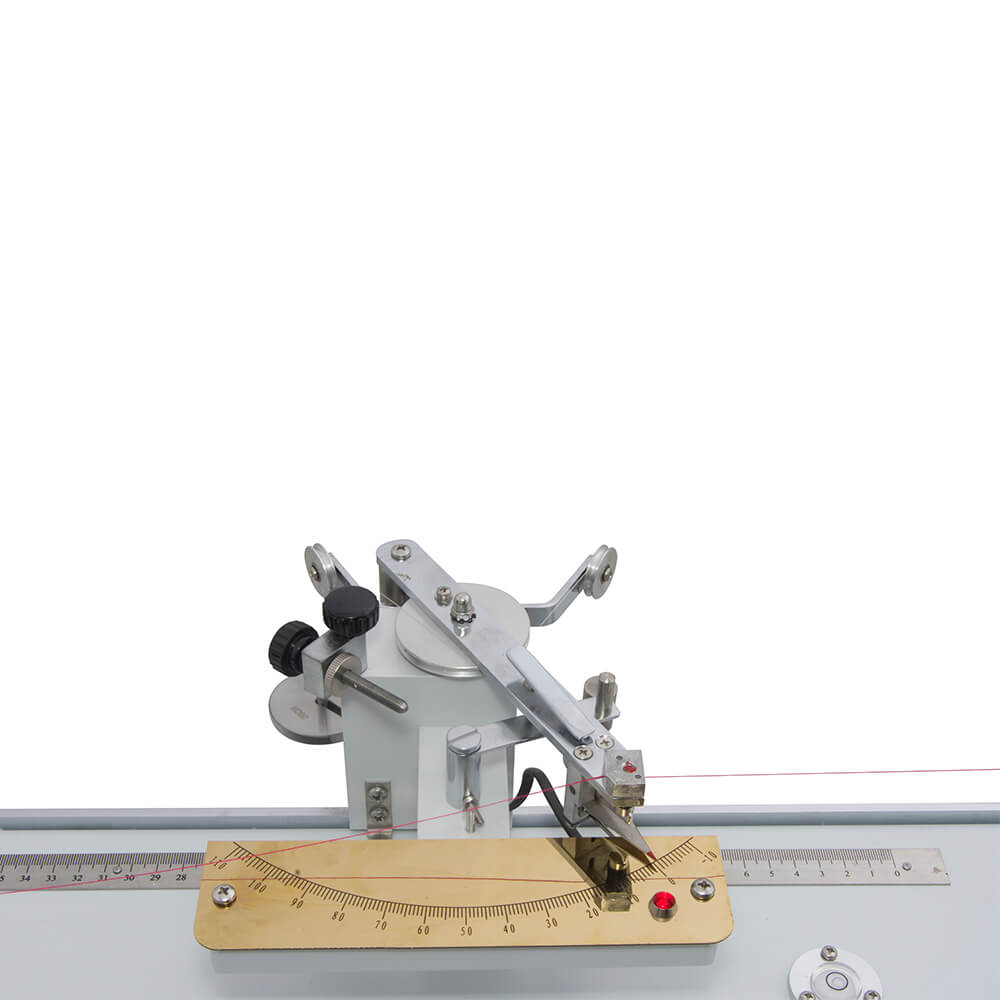
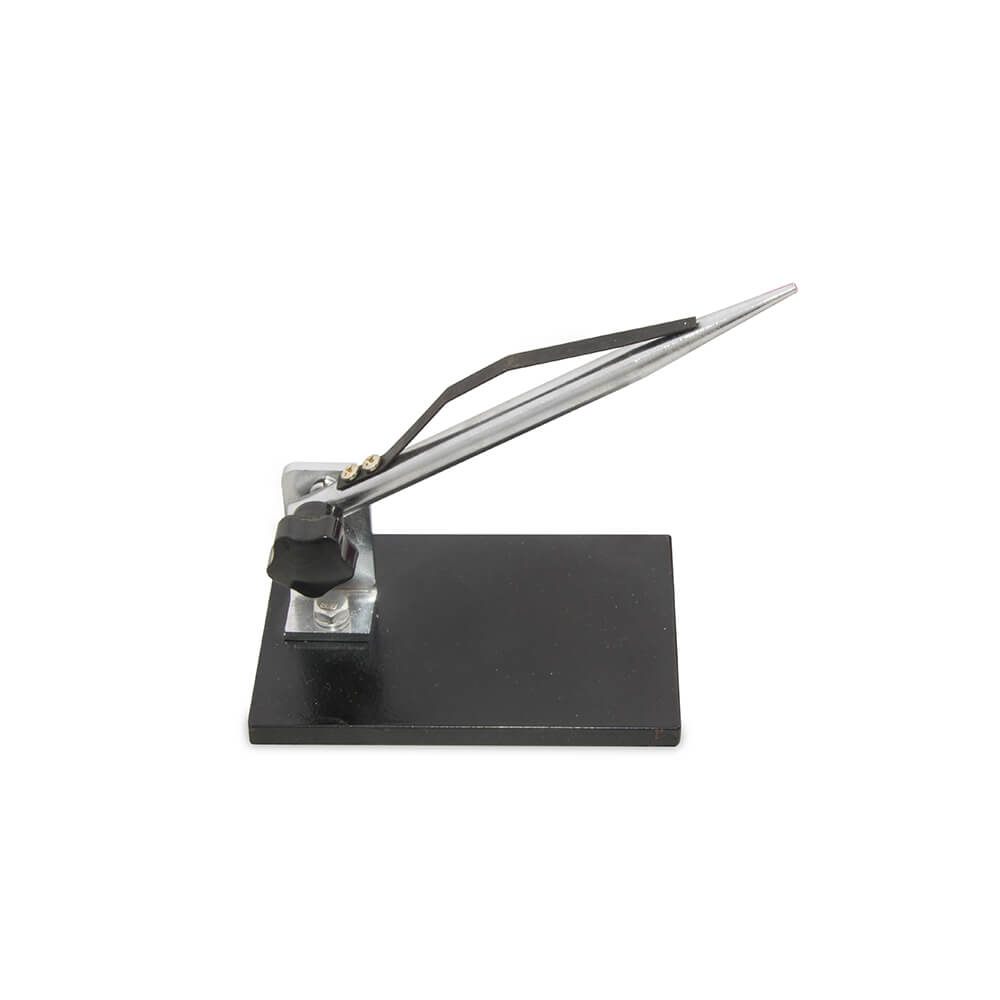
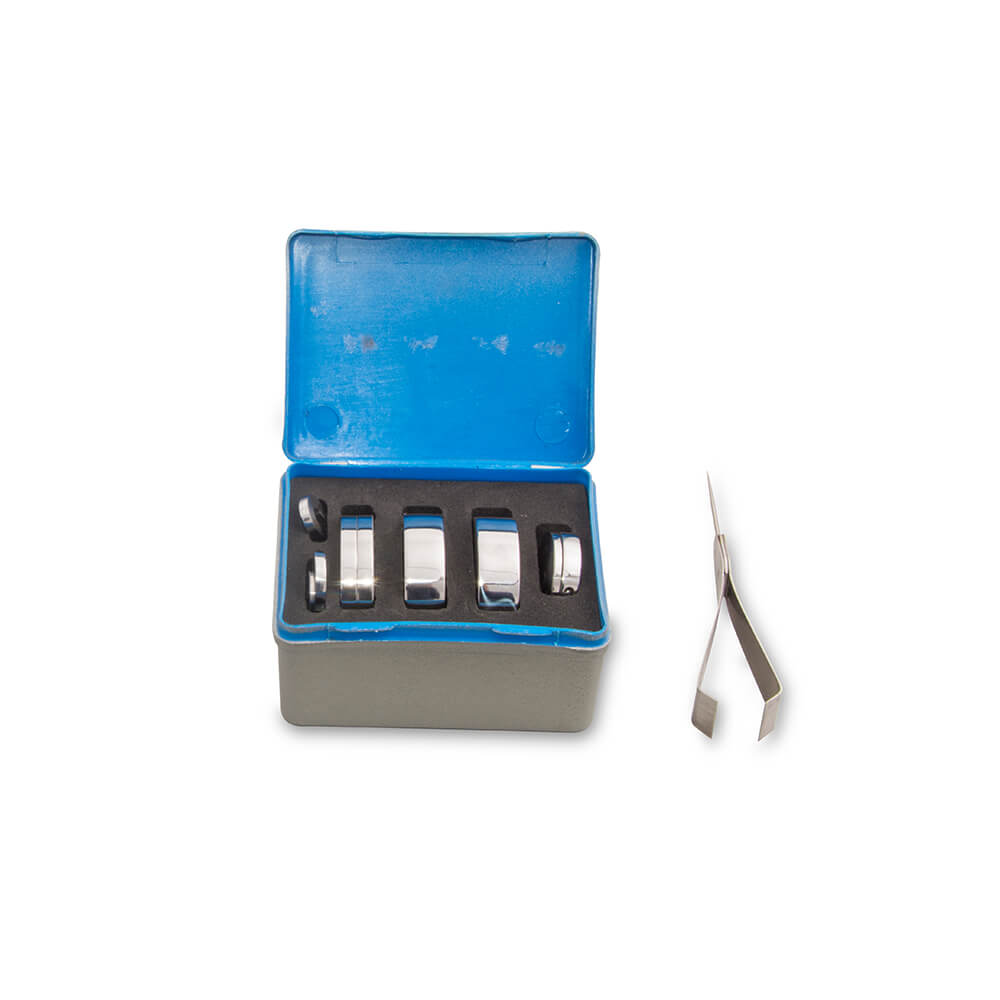
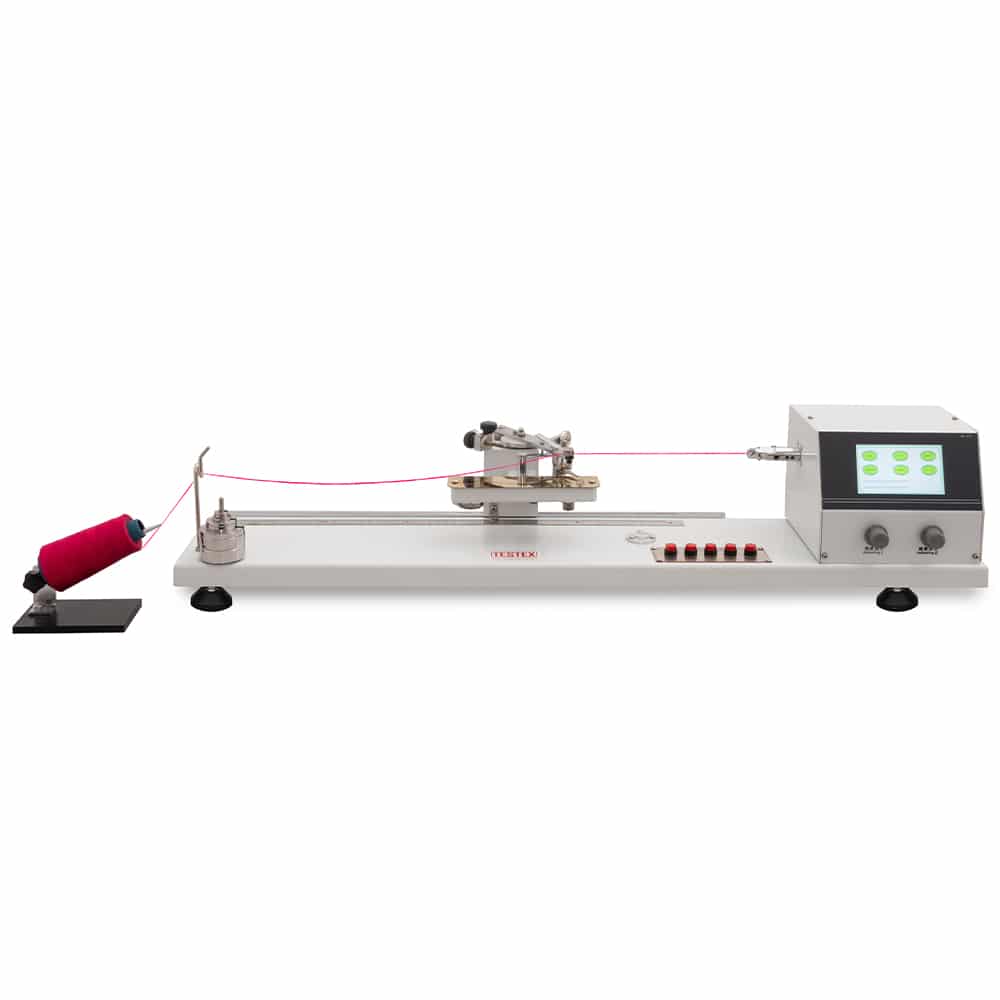
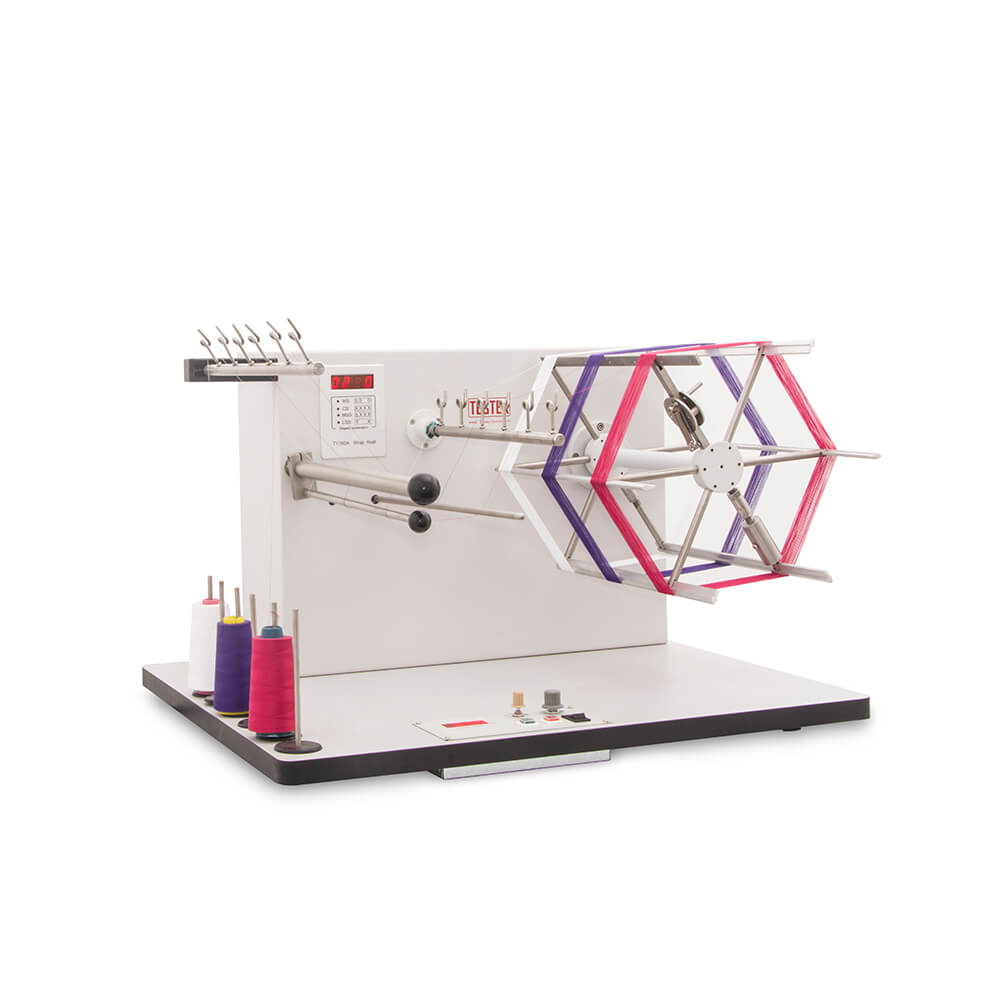
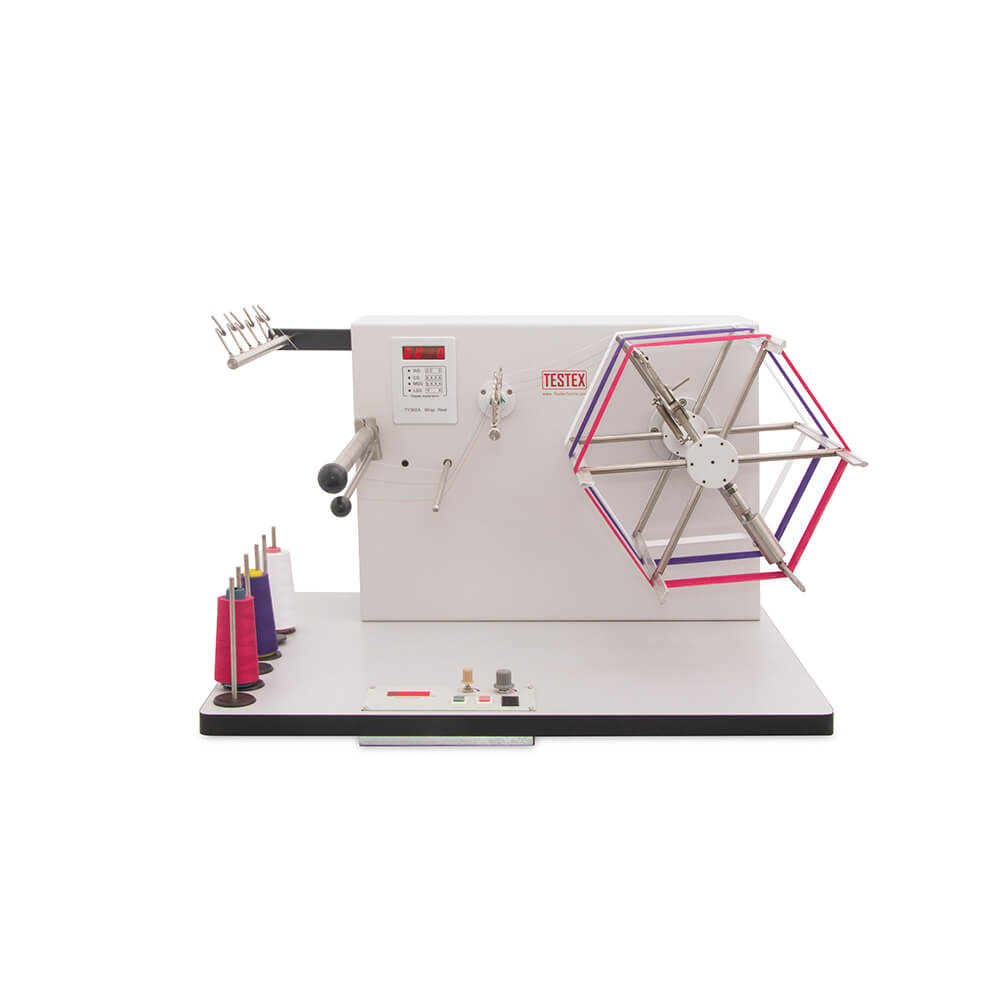
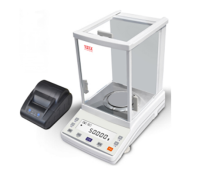
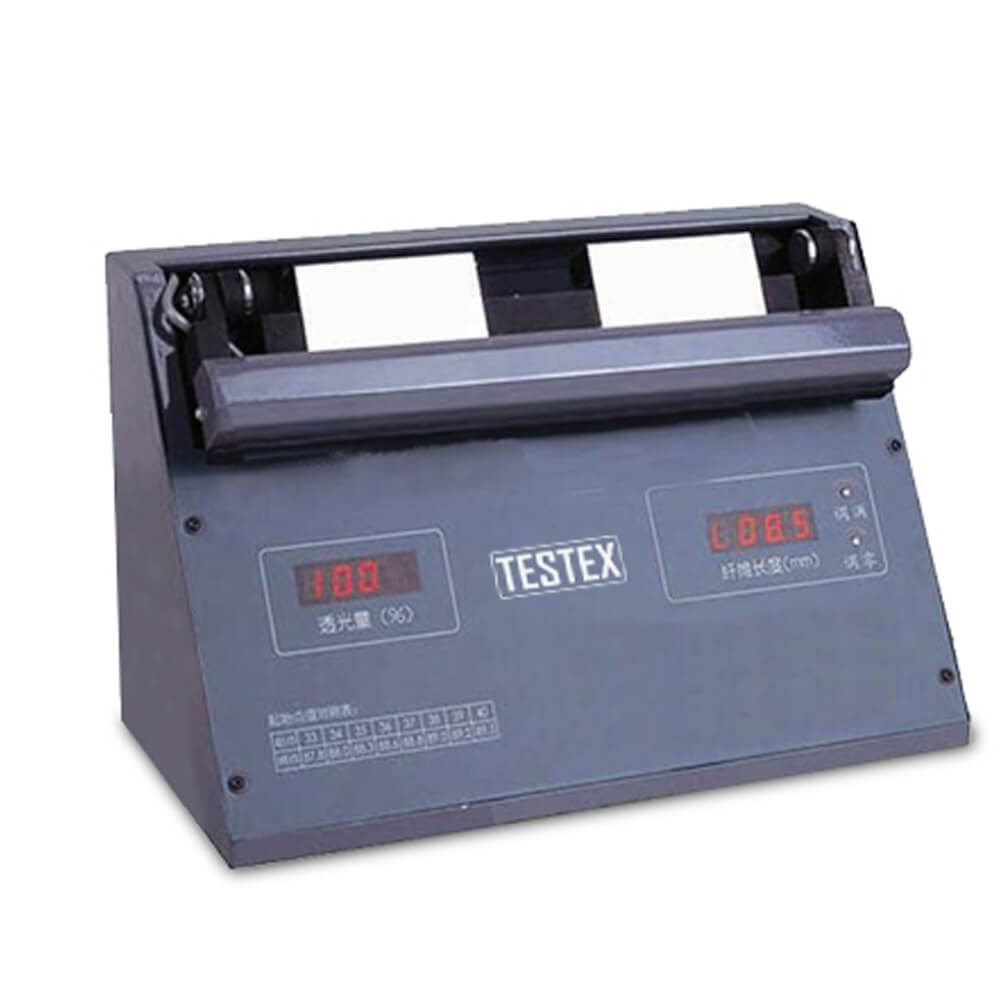
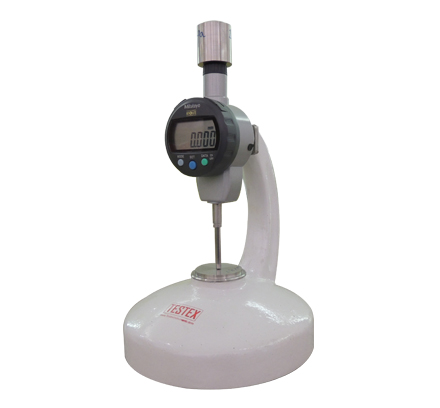
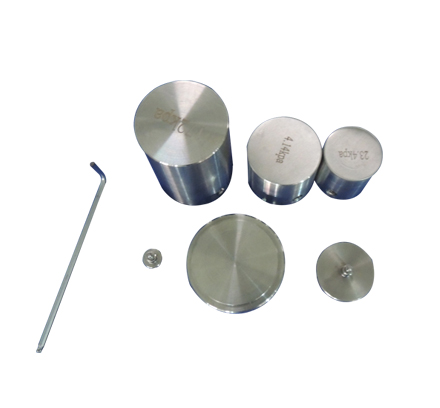
Vicky Donne –
Excellent unit.
Darnell Peacock –
The twist tester price is really favourable.And it has great performance in Yarn twist test.